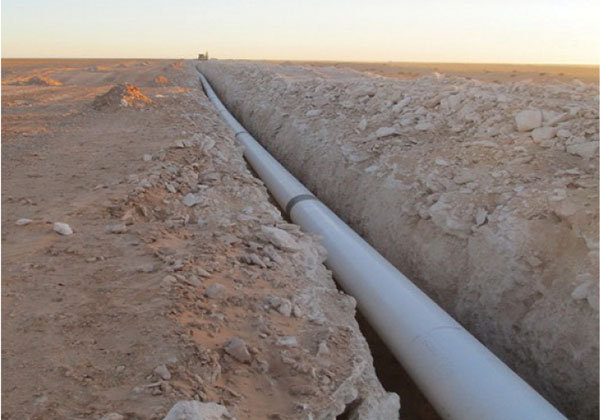October 2023, Vol. 250, No. 10
Editor's Notebook
Editor’s Notebook: ‘Peace Pipeline’ Project Appears Dead
By Michael Reed, Editor-in-Chief
(P&GJ) — At least for a while over the last couple of decades, the Iran-Pakistan (IP) gas pipeline was perceived by some as something that would bring at least a measure of harmony to Pakistan’s relationship with Iran. However, once again, the project has been shelved – this time apparently under U.S. pressure.
Dawn, a Pakistani news outlet, reported Pakistani ranking officials have said they unable to go forward with the pipeline as long as sanctions against Iran are in place – or until the U.S. signals a sort of tacit approval of the project. The latter appears highly unlikely.
This most recent opposition from a foreign country has proved, over the years, to be less of an exception than a rule for the beleaguered project, which first drew serious consideration in 1995.
In 2012, for example, Saudi Arabia went so far as to offer incentives for Pakistan to abandon the pipeline. These reportedly included oil supplies, an oil facility and an oil terminal. This came about due the Saudi’s rivalry with Iran, which has since de-escalated to some extent.
Additionally, the U.S., which has been a benefactor to Pakistan to the tune of billions of dollars, has never been pleased with the idea of a Pakistan accord with its geopolitical foe.
India, which was part of the first incarnation of the project, once saw the project as a path forward toward energy independence but pulled out more than a decade ago due to fears over gas pricing and the potential for security breaches.
As far as construction efforts go (or fail to go), in 2011, Iran announced it had completed a portion of the pipeline – on its side of the border, of course – and was waiting, not so patiently – for completion on Pakistan’s side. Iran suggested it would charge a huge penalty if its partner on the pipeline had not finished by 2014. That did not happen. In fact, Pakistan never began construction.
The IP, which for a while was referred to as the Peace Pipeline, had been most commonly estimated to be 1,724 miles (2,775 km) in length, with variety of most-likely inflated capacity claims.
Those projections came down substantially over the years with the latest specs on the IP pipeline showing a 56-inch pipeline with a maximum discharge of 1.4 Tcf/a (40 Bcm/a).
At various times, companies ranging from Gazprom, BHP, National Iranian Gas Company, Petronas and Total all expressed interest in the pipeline. As did a consortium made up of Petronas, BG Group and Royal Dutch Shell. Those days are gone.
Pakistan has issued a force majeure notice to Iran under the Gas Sales and Purchase Agreement (GSPA), which suspends Pakistan’s obligations under the agreement. Legally, that would free both parties from their commitments due to “extraordinary events,” affecting one of the parties.
Nonetheless, Pakistani Minister of Energy Musadik Malik told the Spanish international news agency EFE that Iran is disputing the validity of the move. He said this could lead to an international arbitration, in order to determine any penalties that would be levied.
In the meantime, what appears to be the final demise of pipeline could not have come at a worse time for Pakistan, a nation experiencing a severe energy shortage and with an economy that has been reeling and in serious need of a cash infusion.
The International Monetary Fund (IMF) recently agreed to loan the nation $3 billion. For months, Pakistan has dealt with rolling blackouts due to the major LNG shortage in the country in the wake of the growing European demand that occurred after the Ukraine War began.
In doing so, the IMF called the Pakistan’s economic challenges “complex and multifaceted” and said the risks are “exceptionally high.” It cited, “significant shocks” during the year, including $30 billion in flood damages.






Comments